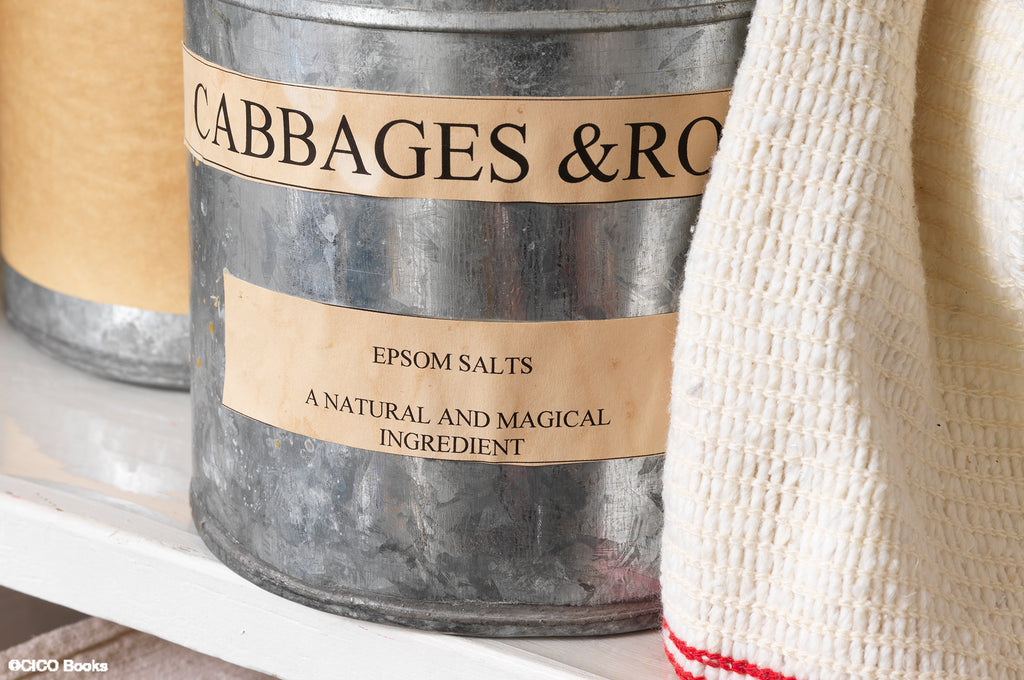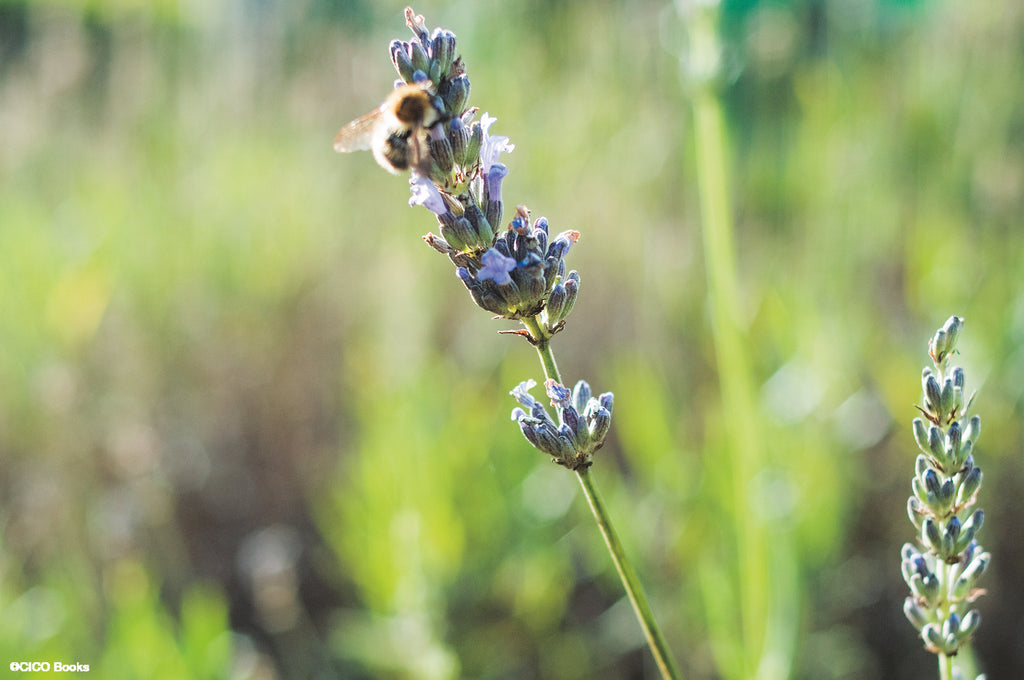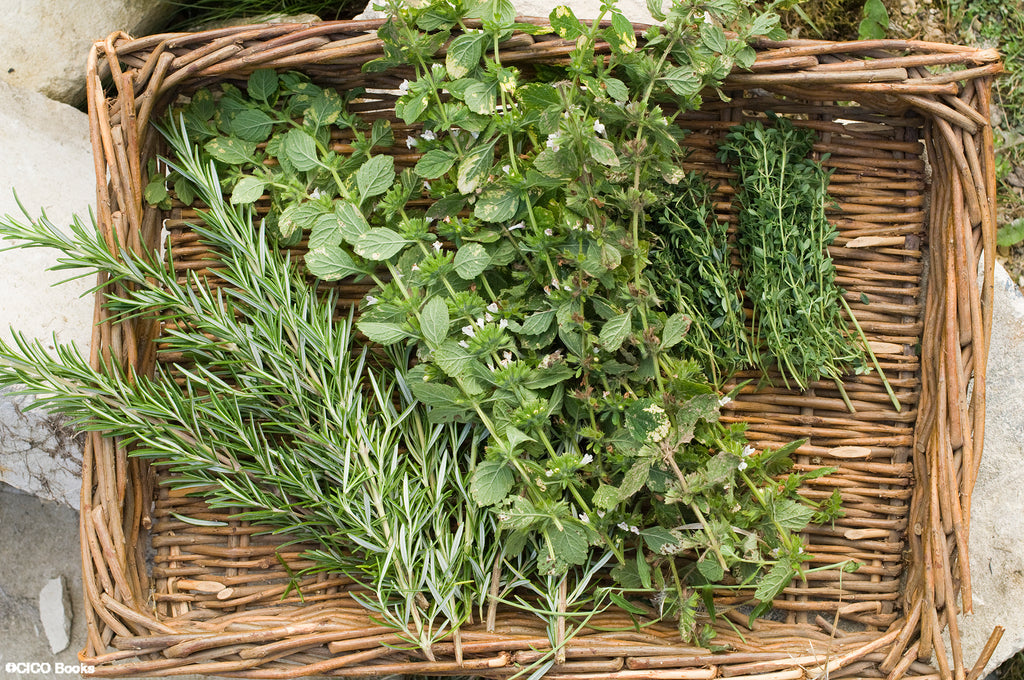In the brand new edition of Green Housekeeping, Christina Strutt of Cabbages & Roses will show you how to create a healthier and more eco-friendly home, from adjusting the way you clean your house and wash your clothes, to advice on growing your own herbs and caring for your skin. We've put together some of Christina's top tips and tricks to help you take a greener approach to looking after your garden.
Feeding Plants and Shrubs
Along with homemade organic compost, a major, but little-known asset to the gardener’s store cupboard is a good supply of Epsom salts. Their beautifying and health-giving properties are listed in Chapter Five but the benefits of this completely natural compound to the garden are also numerous—I cannot recommend Epsom salts highly enough. A generation ago, they were frequently used in the garden and in the medicine cabinet, but Epsom salts seem to have fallen by the wayside in recent years, replaced by more “up-to-date” chemical formulas, many of which cause more harm to the garden than good. Studies have shown that magnesium and sulphur (two of the components of Epsom salts), enrich the soil to benefit vegetable crops and flowering plants. The benefits of using Epsom salts include helping seeds to germinate promoting bushier plant growth encouraging flowering plants to produce more flowers increasing chlorophyll production in plants improving the phosphorus and nitrogen uptake of plants.
Dissolve four handfuls into 2½ gallons (about 10 litres) of water — this quantity will drench a 50-square-foot (about 15 square meters) plot. Alternatively, sprinkle around the roots of plants and water in.

Garden Pests
The battle against pests in the garden is never ending, which makes it very tempting to resort to toxic chemicals. However, as well as being unkind—I hate the thought of even a slug dying a slow and painful death—toxic substances are not really necessary, because there are other methods that are just as effective.
All the natural methods of pest control that follow are as adequate as their chemical counterparts. Unlike commercial pesticides, they do not harm the natural predators of pests or the environment. One of the most effective ways to prevent infestation is to grow strong, healthy plants. In my experience, these can survive an occasional attack from small pests if you are vigilant and react quickly.
Slugs and Snails
Humane snail and slug traps Make humane traps for snails and slugs by burying bowls of beer in the soil, pouring in enough beer to drown a decent-sized slug. The enticing odour of the beer will attract the pests so that they slither into the bowl, get drunk, and drown. Milk and water is an alternative lure, but I prefer the idea of a drunk slug drowning to the rather sweet idea of a slug with milk whiskers. Humane traps are an infinitely kinder method of ridding the garden of one of its most irritating pests than using toxic slug pellets, which are eaten by slugs, and the slugs in turn are eaten by birds.
Powdery Mildew
To prevent powdery mildew on grapes, spray with a mixture of 1 teaspoon of baking soda (bicarbonate of soda) and ½ teaspoon liquid soap in a gallon of water. Avoid applying this in full sun.
Moles
To deter moles from digging holes in your garden leaving unsightly, although useful, crumbly earth, bury plastic bottles in the ground, leaving about 1 in. (2.5cm) of the bottle neck exposed. The noise from the wind blowing across the top of the bottle neck will deter the moles. You can use glass bottles, but I feel this might be dangerous if you should forget about them being there and mow them accidentally.

Attracting beneficial insects
Some companion plants not only deter particular crop pests but also attract the insects that feed on them. Planting specific shrubs to attract butterflies, hover flies, and bees adds to the beauty of the garden; and, by encouraging the right kind of wildlife, you are dealing with the wrong—damaging—kind. Shrubs require little effort, and some are also generous in providing cut flowers for the house.
Bees: the gardener’s friend
It is thought that there are 30,000 different species of bees in the world, and one-third of our food supplies depends on pollination by bees and other insects. Encourage bees to visit your garden by planting blue, white, yellow, and purple flowers for their ultraviolet properties. Honey from bees living in or near towns is far more delicious than honey from hives in farmland. This is because of the variety of flowers producing the nectar that flavours honey; acres of the same crop create no variety.
Ladybugs
Encourage ladybugs into your garden for they eat aphids and blackfly. Ladybugs like to lay eggs in nettles, so leaving a small nettle patch to flourish in your garden should increase ladybug numbers. One ladybug that lives for one year can eat more than 5,000 aphids. If a plant is infested with aphids, don’t panic and spray it with a chemical pesticide—once ladybugs reach that plant, they will eat the aphids quickly. If there is no sign of ladybugs dealing with the problem, spray with a strong jet of water from a hose to wash the aphids off.
More green gardening tips, tricks and advice, check out Green Housekeeping by Christina Strutt. To get more great blog posts like this one - direct to your inbox – be sure to sign up to our mailing list here.

